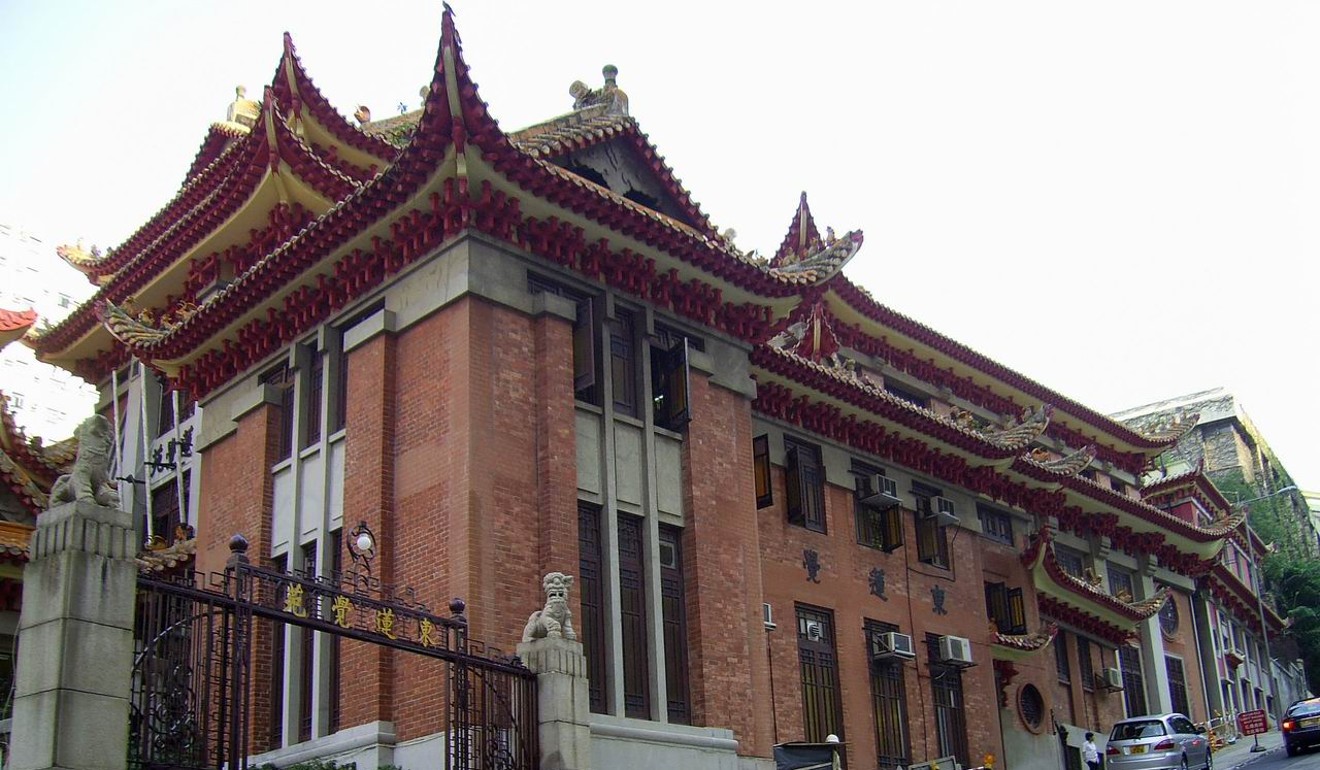
Hong Kong antiquities board declares three historic buildings worthy of permanent protection
Grade One designations accompanied by recommendation that ‘every effort’ be made to preserve a 130-year-old building in Central
Hong Kong’s Antiquities Advisory Board has agreed to declare three Grade One historic buildings as monuments for permanent protection.
The three buildings are 82-year-old Buddhist temple Tung Lin Kok Yuen in Happy Valley, 86-year-old Kowloon Union Church in Yau Ma Tei, and 318-year-old Yeung Hau Temple in Tai O.
At a meeting on Thursday, the board also agreed to recommend a three-storey building with over 130 years of history in Central as a Grade One historic building, meaning “every effort should be made to preserve [the building] if possible”.

“The Antiquities and Monuments Office considers that with the significant heritage value ... the three historic buildings have reached the ‘high threshold’ to be declared as monuments,” the office said in a statement. “Consent ... has been obtained from the respective owners.”
Office executive secretary Susanna Siu Lai-kuen said the three buildings were all privately owned, but the office would oversee the buildings’ conservation and maintenance after the declaration. The owners would need to obtain a permit from the office if they wanted to initiate any maintenance or renovation works, she said.
Built in 1935, Tung Lin Kok Yuen was founded by Lady Clara Hotung and her husband, prominent businessman Sir Robert Hotung. Its temple was designed by Fung Tsun, an architect trained in Hong Kong and London. It features Western engineering and Chinese designs such as flying eaves, brackets and glazed tile roofs.
Kowloon Union Church was built by the London Missionary Society and officially opened in 1931 by then governor Sir William Peel. During its occupation of the city, the Japanese army converted the church into a horse stable. It reopened for public worship in 1947.
The church is Gothic in style with a pitched Chinese-tiled roof, red brick walls and contrasting grey granite steps.
Yeung Hau Temple is thought to have been built in 1699 or earlier and is now the oldest temple in Tai O. Ceramic figurines depicting Chinese folk stories can be found on the roof’s ridge. There are also a pair of historic couplets from 1877 as well as a plaque from 1881 hanging inside the temple, which are unique artefacts in Hong Kong.

The building at 120 Wellington Street, nicknamed Wing Woo Ho after a well-established former grocery store on the ground floor, was recommended as a Grade One historic building, pending a one-month public consultation.
At the board meeting, office curator Ng Chi-wo said Wing Woo Ho was built between 1880 and 1894, with its exterior and roof well preserved, and contained a wooden indoor staircase and some cement tiles with flower patterns.
The company proposes to remove the artefacts by hand after numbering and reassembling them at their original positions once necessary works at the station are carried out. A transparent panel is to be installed on the station’s roof to allow people to view the well and channel from below.
The company also proposes to install two display cabinets in the station concourse to showcase other unearthed relics.
But some board members urged the MTR Corp to incorporate more historic elements in the station, such as pictures and accompanying texts to draw viewers. Others questioned whether the company could create sufficient space for viewers and commuters without any conflicts.

